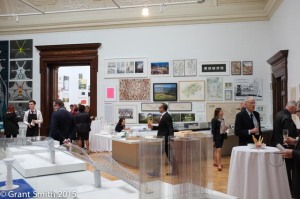Nikon’s latest lens for the architectural photographer is the very flexible 19mm f4 Tilt & Shift lens. Weighing nearly 1kg, the lens is worth its weight in gold, and with a price tag to match the weight.
I have used previous Nikon Perspective Control lenses, from the early 28mm and 35mm lens, and more recently the 45mm and 24mm, which have been parts of my standard kit for architectural photography. I supplement these with the ever reliable f2.8 14-24mm lens, but the 19mm will be a must have lens for any architectural photographer.
Maximum shift can be applied in any direction, horizontally or vertically, with no vignetting. On the 24mm and 45mm lens, shift in the vertical direction is limited to 8mm, after which there is vignetting. The 19mm has no such limitations – I used it on several different occasions at the maximum shift in the vertical format and no fall off in focus and light intensity were apparent. The images (shot with both a Nikon D810 and a D800) from top to bottom was crisp and sharp. Focusing is critical, and this is harder on such a wide lens, but forensically scanning the viewfinder to check that all of the image in focus is vital.
The lens has a huge bubble of glass at the front and therefore impossible to shade. However despite shooting at night, no ghosting or flare occurred on the image from nearby light sources. The nano crystal and fluorine coatings applied to the lens do a superb job. This is not a lens to be used in haste, so one must work more slowly and exactingly, as with a 5×4. The pleasures of using such a beautifully crafted and engineered lens are immense, and I haven’t even explored the tilt facility.
Nikon














